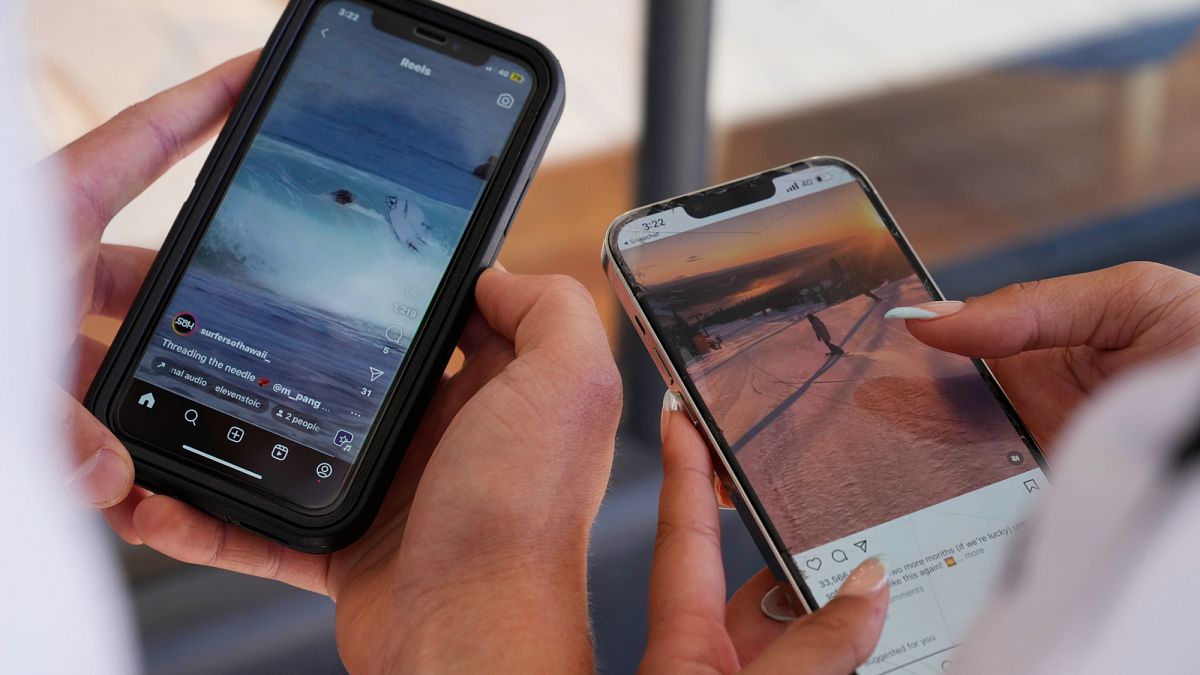Mississippi
How revenue sharing will impact Ole Miss, Mississippi State football salary cap, NIL

High-level college athletics put an end to its longstanding amateurism policies last week, leaving administrators at schools like Ole Miss and Mississippi State to find a way forward under the new order.
The NCAA, Power Five conferences and lawyers representing plaintiffs in three antitrust cases agreed to a settlement that will obligate the NCAA to backpay nearly $2.8 billion in damages for current and former college athletes. The same agreement, which still requires the approval of a judge, will require universities to begin sharing revenue with their athletes ‒ with fall of 2025 reportedly targeted as a start date.
What do these changes mean for Ole Miss and Mississippi State? Here’s a look at three big questions facing both schools.
How will Mississippi State, Ole Miss handle the additional expense?
The athletic departments at both Ole Miss and Mississippi State operated at deficits in the most recent reporting year. The Rebels lost over $8 million, with the Bulldogs’ revenue report outlining a loss in excess of $5 million.
Now, the NCAA will be reducing its distributions to schools to help pay the $2.8 billion in damages it owes as a result of the settlement. It says 24% of that $2.8 billion will be made up for by distribution reductions to schools like Ole Miss and Mississippi State.
The initial revenue distribution cap is expected to be at least $20 million, increasing in proportion to athletic department revenues over time. For context, Mississippi State spent roughly $121 million total in the most recent fiscal year. Ole Miss spent about $150 million.
Both institutions face a challenge when it comes to balancing the budget with the sizable new costs.
Ole Miss athletics director Keith Carter outlined the approach he’ll take during an interview with The Clarion Ledger in January.
“Are you asking your development staff to raise money in a different way?” Carter said. “We’re always looking for new revenue sources. Obviously, a worst-case scenario is you have to downsize your sports. You have to figure out what makes sense. If the industry of college athletics becomes more businesslike, you may have to start running it more like a profit-loss business.
“That is a worst-case scenario. Nobody in college athletics wants to do that, take opportunities away from college athletes. As we go through this model, everything’s on the table.”
How does this change impact Ole Miss, Mississippi State NIL?
The college football roster construction economy has been driven by name, image and likeness payments since they were made legal in the summer of 2021. Some NIL payments are endorsement deals, with athletes receiving compensation in exchange for advertising a product. Others more closely resemble outsourced pay-for-play, with outside collectives affiliated with each school paying players to join their program.
With a settlement reached and a revenue-sharing cap proposed, there are questions as to whether the NCAA can restrict supplemental NIL payments as a means to circumvent a salary cap.
At Ole Miss, in particular, an aggressive collective has helped drive unprecedented football success. The Rebels won 11 games in 2023 for the first time ever.
“College athletics is evolving and some much needed balance is coming,” Walker Jones, who runs the Rebels’ collective, posted on social media last week. “Ole Miss athletics and (The Grove Collective) will be at the forefront of this evolution and are well positioned to lead and compete at the highest level.”
At Mississippi State, second-year athletic director Zac Selmon took charge amid an NIL surge sparked by the departure of former AD John Cohen.
“We’ve put ourselves in a position to be successful,” Selmon told The Clarion Ledger after 2023 football season. “Successful doesn’t mean reckless, too. Some schools, I think – or some collectives, some NIL boosters, however you want to define them – have been reckless. And a lot of times reckless without any backing.”
BASEBALL: Why Mississippi State baseball will – and won’t – win Charlottesville NCAA Regional
How do Rebels, Bulldogs prioritize their revenue-sharing budget?
Though the future of NIL is unclear, it seems certain that college athletics is headed toward a salary cap.
If each university can distribute around $20 million to its athletes annually, how much of that is spent on football? Men’s and women’s basketball? Baseball?
It’s a challenging question, particularly for Mississippi State and Ole Miss, which have priorities that might not align with their peers. The Bulldogs and Rebels are two of the proudest baseball programs in the country. Do they take money out of football’s budget to spend on baseball? Or do they invest everything they can in football, which is likely to remain the most financially competitive space?
Revenue sharing and women’s sports at Ole Miss, Mississippi State
And what say will Title IX have in how the money gets allocated?
The federal gender equity law adds another factor for athletic departments to consider as they slice up the pie.
Women’s basketball operates at a deficit at both Ole Miss and Mississippi State, though the NCAA could soon begin distributing unit payouts which could change that picture.
The Rebels have won three NCAA Tournament games in the last two seasons, and pay their coach, Yolett McPhee-McCuin, over $1 million annually. Mississippi State has been to the Final Four twice since 2017.
David Eckert covers Ole Miss for the Clarion Ledger. Email him at deckert@gannett.com or reach him on Twitter @davideckert98.
Get the latest news and insight on SEC football by subscribing to the SEC Unfiltered newsletter, delivered straight to your inbox.

Mississippi
Grand opening of first Mississippi Buc-ee’s draws huge crowd

Mississippi
First Buc-ee’s in Mississippi opens to hundreds of loyal fans. See customer reactions

What to expect from Buc-ee’s before the first one opens in Mississippi
The Robertsdale, Ala., Buc-ee’s keeps people coming back. The stores have lots of food options and are known for clean bathrooms and friendly service.
PASS CHRISTIAN, Miss. — Amanda Yarborough, a schoolteacher from Long Beach, was one of the first to arrive at Buc-ee’s Travel Center on Monday, hours before the store’s 6 a.m. grand opening.
She brought her Buc-ee’s chair and sported a Buc-ee’s T-shirt and cap.
“What was I thinking?” she said, holding up a purple stainless-steel mug. “I didn’t bring a Buc-ee’s cup.”
Yarborough was one of nearly 1,000 Buc-ee’s fans who turned up for the first Buc-ee’s to open in Mississippi.
Like many other Buc-ee’s fans, she likes everything.
“It’s like the Amazon of gas stations,” she said.
At 6 a.m., hundreds stampeded the store’s opening.
The Ward family, who came from Alabama, discovered Buc-ee’s when the Leeds, Alabama, location opened.
Since 2023, the family has been to 45 stores before the Mississippi one and have the refrigerator magnets to prove it.
“We’re celebrating our 50th anniversary in two weeks, so this is kind of our pre-anniversary celebration,” Darlene Ward said, pointing to her husband, Charlie.”
The couple came from Boaz, Alabama, with their daughter Angela, who lives in Livingston, Alabama.
The family plans to visit the Robertsdale, Alabama, store on the way home.
“That will make 47 Buc-ee’s,” Angela Ward said.
Fifteen-year-old Scott Brown of Gautier dressed up in a Buc-ee’s onesie to celebrate the store’s opening.
“I thought it was kind of appropriate for today,” he said.
Brown said he likes the food and drinks at Buc-ee’s. One of the first things Brown and his friends did when the store opened was grab a few sandwiches. He couldnt wait. He scarfed one down before making it to the checkout counter.
Brown has been to several Buc-ee’s in Texas and Florida. Now there’s one closer to home.
“We go on cruises and we stop at every one of them,” he said.
The Mississippi location off Interstate 10 in Pass Christian is roughly 74,000 square feet — 20,000 square feet bigger than the neighboring location in Alabama. And it has 120 gas pumps, all of which were full as the store opened on Monday.
This is a developing story and will be updated.
Mississippi
Langdon and Maude Schuyler Clay capture the culture of Mississippi through the lens of a camera

- The two have spent a lifetime documenting the world around them.
Watching documentaries and reading memoirs and other works of creative nonfiction has become almost an obsession with me. My fascination is probably due to the fact that the stories being told are real and true. Learning how people overcome obstacles or create a life for themselves that is vastly different from the expected trajectory ignites my own imagination. That is especially true of creative endeavors or lives that are rooted in the pursuit of creative storytelling in one way or another.
In Mississippi, a couple living in Sumner, Mississippi, has created a life that is full, and rich, and filled with stories they’ve collected in their forty-plus years of marriage. Langdon and Maude Schuyler Clay are professional photographers who have spent a lifetime documenting the world around them, whether in an ancient cemetery in the middle of Paris or a dog on a log in a cypress swamp deep in the Mississippi Delta.
Thanks to mindless scrolling on Facebook recently, I came across a post by Maude where she mentioned that several people had asked her where they could watch Thad Lee’s documentary about them called “Two Lives in Photography.” It seems Thad is set to get a special award from the Mississippi Institute of Arts and Letters for the film on June 14. Maude also included a link to the documentary, which can be viewed on YouTube.
I have been a fan of Maude Schuyler Clay since I interviewed her years ago for an article I wrote on photographer William “Bill” Eggleston. I was somewhat familiar with Eggleston’s work. My editor gave me a list of contacts, and Maude was on that list. During our conversation, she realized I had no idea she and Eggleston were first cousins – their mothers were sisters. She explained their relationship and gave me wonderful insight for my article.
Curious, I clicked the link to the documentary and spent the next hour and a half transfixed. “Two Lives in Photography” showcases not only the work of Langdon and Maude but also the love of place that is reflected in their work as well as their love for each other.
Oxford Film Festival veteran Thad Lee directed the film, which focuses on a photography retrospective by the same name at the Mary Buie Museum on the campus of the University of Mississippi in Oxford. The exhibit was curated by Melanie Munns Antonelli. The pieces in the exhibit feature photographs taken by the couple over a span of decades, including some taken before they married.
In the film, Langdon says the couple met in 1976 at the Museum of Modern Art in New York.
“We were at a show for Bill Eggleston – his first ever color photography show.”
Maude had spent time in New York interning for Eggleston.
Lee spent three years producing the film. It begins in 2020, with Landon and Maude walking through the gallery, each relaying the stories behind the photographs, as well as describing how they, as photographers, were able to capture the photos with their respective cameras.
“Somehow you see something and you snap it, and you know you’ve got the prize,” says Langdon. “Other times you’re on a hunt. It could be for months or even years. Then you’ll see a special thing.”
Langdon is a master at seeing the symbolism in seemingly ordinary things, and that adds an interesting dynamic to his work. Maude says she has always been a proponent of photography being very much connected to literature.
“All these photos are stories,” she says in the film. “I like the idea of marrying words and images.”
She had three prominent Mississippi writers write the foreword to her books. Lewis Nordan wrote the foreword to Delta Land, Brad Watson wrote the foreword to Delta Dogs, and for Maude’s portrait book called Mississippi History, the foreword was written by Richard Ford.
The film was artfully shot by cinematographer Gregory Gray, and the hauntingly beautiful score was by Delta native Jim “Fish” Michie, best known in these parts for being one of the founders of The Tangents.
At the end of the film, Maude says, “As freelance photographers and artists, we set out without any real guarantee that our work was ever going to be shown or any of it was ever gonna be published. I think one of the commonalities that Langdon and I have is that we believed that was what we were going to do, no matter what. It has paid off, because, you know, it’s kept us occupied for the past forty years.”
For a teaser to the film, take a moment to watch this trailer. If you’re a person who enjoys learning about the stories behind the artist and their work, you will probably enjoy “Two Lives in Photography” as much as I did.
-

 Politics1 week ago
Politics1 week agoMichelle Obama facing backlash over claim about women's reproductive health
-

 Finance1 week ago
Finance1 week agoHere's what will boost your feeling of financial well-being the most, researchers say
-

 West4 days ago
West4 days agoBattle over Space Command HQ location heats up as lawmakers press new Air Force secretary
-

 Technology1 week ago
Technology1 week agoWhy do SpaceX rockets keep exploding?
-

 World1 week ago
World1 week agoNcuti Gatwa Bids Doctor Who Farewell as Finale Ends With a Most Surprising Twist — Grade It!
-

 News1 week ago
News1 week agoTrump administration continues to target international students. What to know and what could be next.
-
Vermont1 week ago
MMU’s Bea Molson returns to glory, CVU girls claim doubles at tennis championships
-

 Politics1 week ago
Politics1 week agoCalifornia beach ‘Resist!’ protest pushes ‘kindness’ while calling to ‘86 47’ in anti-Trump message


















